For better or for worse, we're living in a world of excess — instead of appreciating the moment, we're constantly thinking ahead to the next thing, planning the next step, and desiring more. This drive toward progress has its benefits, but there are pitfalls too. Life at warp speed can cause anyone to lose sight of the basics.
Such circumstances apply to athletic recovery as well. People are so eager to jump onto the latest trends like massage therapy, aggressive diets, or topical creams, they sometimes forget to cover the basics like sleep.

Meet REM-3, a new kind of sleep aid - a simple one! While everyone's putting the kitchen sink into their sleep, PEScience keeps it simple, with a melatonin dose that will please both sides of the argument!
For decades, experts have been sounding the alarms about our society's exceedingly poor sleep habits, and health-conscious consumers are finally starting to listen. But even the "sleep industry" has fallen victim to excess, in the form of complex guides, over-dosed and over-the-top supplements, and other interventional practices. Rather than immediately gravitating towards advanced practices, PEScience (the brand behind the insanely popular Select Protein) argues that all you really need to sleep better at night is a return to the basics.
PEScience REM-3 Better sleep in three ingredients
With regards to sleep aid supplementation, PEScience REM-3 embodies this "back to basics" concept. Rather than load a formula full of experimental ingredients, or even mega-dosing the common ones, REM-3 takes the minimalist-like approach: provide just enough of the ingredients that work without doing too much more.
The result is a cost-effective sleep-aid with absolutely minimal (if any) side effects. Simple, easy on the wallet, and, of course, effective — that's a recipe for an excellent sports supplement.

See our PEScience page to compare prices on all of their excellent supplements!
In the case of REM-3, these three traits work to deliver some sweet, deep sleep to the end of your day. REM-3 brings just enough to the table to help you catch some Z's, recover from today, and prepare for whatever's coming tomorrow.
And one of the ingredients is a curious 0.3mg dose of melatonin - enough to work, but not enough to cause a hangover effect!
In this post, we'll discuss REM-3 from PEScience and the benefits it delivers that could potentially support your nightly recovery. Before we get to that, make sure you're subscribed to PricePlow for our PEScience news, supplement deals, reviews, and interviews.
PEScience REM-3 – Deals and Price Drop Alerts
Get Price Alerts
No spam, no scams.
Disclosure: PricePlow relies on pricing from stores with which we have a business relationship. We work hard to keep pricing current, but you may find a better offer.
Posts are sponsored in part by the retailers and/or brands listed on this page.
This area is reserved for Team PricePlow's upcoming Ingredients video.
Subscribe to our channel and sign up for notifications so you catch it when it goes live!
Before getting into the REM-3 ingredients, we discuss the known science behind sleep. But you can also skip below to the REM-3 ingredient facts section of the blog post.
Sleep — the all-important battery recharge
Sleep recharges the body and, while doing so, affects virtually every bodily process to some degree. As such, it's easy for many of us to take sleep for granted, just as one might underappreciate the beauty of breathing. Often, we tend to only show appreciation for sleep when we can't get enough of it. We've all been there: the morning after failing to get a good night's sleep, we're fatigued or in a poor mood (or probably both). Since chronic sleep deprivation is a real issue in today's fast-paced world, for many people, it's a frequent occurrence.
Sleep is regulated by the brain, arguably the most complex organ in the human body. The brain controls everything, from speech and motor control to cognition and organ function. It also controls sleep. Different structures within the brain facilitate sleep depending on which of the four levels of sleep one is in:
- Non-REM Stage 1 is a transitory phase between wakefulness and sleep,[1] when the brain slows down and begins producing theta waves.[2] You're not actually sleeping in this phase; you're still aware of your surroundings.[1,2] Fear not, however: non-REM stage 1 lasts for only a handful of minutes.[1]
- In non-REM Stage 2, body temperature and heart rate begin to drop and muscles start to relax. According to the authors of the study, "Physiology, Sleep," humans spend roughly 50% of their total sleep cycle in this phase.[1]
- Non-REM Stage 3 is where the deep sleep that yields refreshment upon waking happens. Delta brain waves are emitted as brain activity and heartbeats slow considerably.[1]
- REM sleep is the phase during which dreaming occurs.[1] It's a bit of a paradox in the scientific community because despite increases in the activity of the brain, eyes, and other systems,[3] muscles become virtually immobile.[3] REM sleep is extremely beneficial for overall health.[3]
While we cycle through the four stages of sleep over the course of the night, recovery ultimately depends on how much deep sleep we get, or how much time we spend in NREM Stage 3 and REM sleep.[2] Unfortunately, as we age, the amount of deep sleep we get tends to decrease.[4] While that's something that happens naturally, it doesn't reduce the importance of quality rest.
Be it due to biological circumstances or day-to-day choices, getting quality rest isn't always easy. The problem is that chronic insufficient sleep can put your health at risk. Though the effects of inadequate sleep (like fatigue and irritability) are generally easy to realize, there are quite a few more that are difficult to identify or, worse, difficult to even link to sleep. A 2017 review published in Nature and Science of Sleep summarizes risk factors and consequences of sleep disruption:
- Potential sleep-disruption risk factors include excessive blue light exposure, caffeine, lack of physical activity, poor sleep hygiene, anxiety, physical pain, illness, and even social/family dynamics.[5]
- Short-term consequences of sleep disruption include high levels of stress and other psychological issues, as well as problems with the somatic nervous system and immune systems.[5]
- Long-term, more serious complications could arise: cardiovascular disease, obesity, type 2 diabetes, depression, and all-cause mortality are all linked to chronic sleep deprivation.[5]

This sleeping woman clearly used her PEScinece Renuvia with skin like that!
Clearly, potential pitfalls resulting from insufficient rest make prioritizing sleep one of the most important things we can do for our health. But reaching the seven to nine hours of slumber each night that experts, including those at the National Sleep Foundation, recommend for adults is easier said than done.[6]
The solution? First, addressing simple potential risk factors is a good start, such as limiting blue light exposure and caffeine intake before bed, room comfort, schedule consistency, etc. If those are taken care of and you still need help, a sleep aid supplement may do the trick!
PEScience REM-3 to the rescue
If it feels like you've tried everything to promote an environment conducive to getting a quality night's rest, yet you still struggle to sleep well, a supplement like PEScience REM-3 may move the needle from tossing-and-turning to waking up feeling refreshed and ready to seize the day.
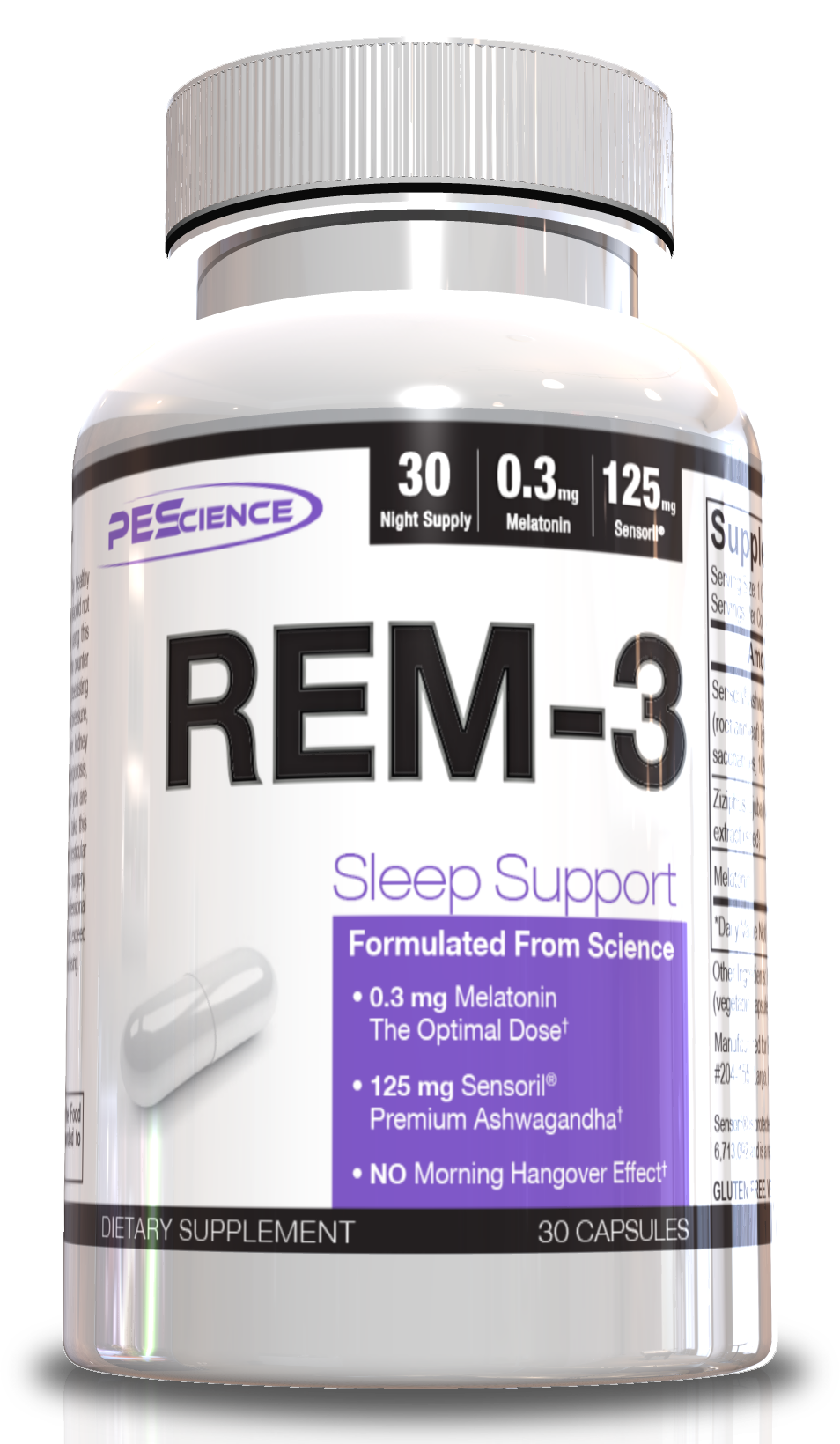
Feel like modern sleep aids are nearly putting you in the grave? Then it's time for PEScience REM-3.
PEScience, a veteran of the sports supplements industry, has long been leveraging a science-backed, high-quality-ingredient based approach to formulating proven products. They've applied this concept to creating supplements covering a wide array of consumer needs: protein powders, pre-workouts, functional foods, greens, etc. PEScience also happens to place a special emphasis on athletic performance. In REM-3, the company takes aim at one of the most important aspects of recovery, one that allows us to perform at our best, regardless of our athleticism— sleep.
REM-3 is different from most sleep supplements, however. On the one hand, it utilizes ingredients that are common in the sleep aid market, but it's unique in otherways:
- It only has three ingredients (a feature that's hinted at in the name). This gives REM-3 a simple and effective profile without going overboard.
- It uses a branded version of ashwagandha that's more sedative than competing alternatives. In other words, REM-3 uses a variant of a powerful ingredient that's more at home on a sleep aid label.
- REM-3 contains a uniquely low dose of melatonin, which aligns with a threshold proven in research that other formulators tend to blow past in pursuit of the commonly held belief that "more is better."
All of this ultimately makes REM-3 a simple-yet-effective sleep aid that can provide that extra bit of rest without waking up the next morning feeling overly groggy... and the price is right!
Let's get into the three ingredients that make REM-3 work:
The REM-3 Ingredients
-
Sensoril Ashwagandha extract (root and leaf) [std. to 32% oligo-saccharides, 10% withanolide glycoside conjugates] - 125mg
In just three ingredients and one capsule, PEScience will have you waking up feeling better without the hangover!
Stress is something that we encounter on a daily basis in a high-energy, constantly-moving world that seems to breed stressful situations — busy schedules, traffic jams, social/family dynamics, and various other circumstances we deal with in life. Facing them is one thing, but coping with them well is another entirely. Being able to stay calm when dealing with stressful situations is easier said than done, and how we react is incredibly important to our health.
Battle cortisol to improve sleep quality
When we get stressed out, the body secretes a hormone called cortisol that triggers the fight-or-flight response. While this is an entirely natural response, sustained cortisol elevation caused by chronic stress can be quite damaging. Though typically discussed in relation to the development of metabolic dysfunction,[7] high levels of stress are also relevant to sleep health.
In a 2015 review published in Sleep Science, researchers found that studies modeling sleep restriction saw increases in cortisol as a result of impairment of the brain's regulation of the hypothalamic-pituitary-adrenal (HPA) axis.[8] An increase in cortisol not only makes it more difficult to fall (and stay) asleep, it also increases the risk of developing metabolic problems such as obesity and diabetes. Poor sleep also leads to higher levels of stress, which itself poses health risks. This notion is supported in a 2010 review published in Best Practice & Research: Clinical Endocrinology & Metabolism. in which the authors describe the intertwined nature of sleep, stress, and metabolic functioning.[9]
The establishment sure put the screws to us in 2020.[35] How can we fight back before it's too late?
Stress is not just a symptom of sleep deprivation, but it can be a cause, as well. In fact, the impact of stress on sleep is so profound that it may relate to other symptoms of poor sleep.A report from a 2019 edition of Physiological Reviews found that the sleep-immune crosswalk is heavily influenced by stress levels.[10]
Managing stress levels is imperative to getting quality rest, which is precisely why REM-3 uses ashwagandha. Also known as Withania somnifera, this Ayurvedic herb has ventured into sports supplements due to its multipurpose abilities. Used as a do-it-all herb in earlier applications, research has found that ashwagandha acts on various systems of the human body, such as the neurological, immune, energy-production, endocrinal, and reproductive systems.[11]
As such, ashwagandha is utilized in a variety of formulas that have different aims. Here, though, we're going to focus on its most common use: reducing stress and anxiety.
Relieving stress and related symptoms
In a 2012 study published in the Indian Journal of Psychological Medicine, researchers assessed the adaptogenic effects of ashwagandha on 64 individuals with a history of chronic stress. In a double-blind, placebo-controlled manner, subjects were split into two groups prior to 60 days of treatment - one group received 300 milligrams of standardized ashwagandha twice daily, while the other received a placebo. Before and after the two-month intervention, subjects' serum cortisol levels were measured. Volunteers were also scored on the Perceived Stress Scale (PSS), the Depression Anxiety Stress Scale (DASS), and the General Health Questionnaire (GHQ-28).
After 60 days, the ashwagandha group significantly outperformed the placebo group in virtually every metric:
The brand behind Cake Pop flavored Select Protein is here to help you get to sleep now too!
- The test group saw a 44% reduction in PSS scores, compared to only 5.5% in the placebo group.[11]
- Approximately 70% reductions in GHQ-28 subsets ("somatic", "anxiety and insomnia", "social dysfunction", and "severe depression") were seen in the test group, adding up to a 72.3% improvement in overall GHQ-28 scores. The placebo group only improved by 2.3% and actually saw increases in multiple subsets.[11]
- The test group had decreased their DASS scores by 71.6%, compared to only a 5% improvement in the placebo group.[11] Similar to what was seen in the GHQ-28 assessment, the ashwagandha group improved significantly in each subsection of the DASS, while the placebo group actually got worse in a few areas.[11]
- Serum cortisol was 27.9% lower in the test group compared to baseline, while the placebo group only saw an average reduction of 7.9%.[11]
The anxiolytic effects of ashwagandha were visible both in contextual metrics and at the biological level, leading the study authors to conclude that ashwagandha could be an incredibly effective tool for battling stress and improving user's quality of life.[11]
...such as insomnia
Insomnia is a sleep disorder in which an individual has significant problems falling asleep and/or staying asleep. According to the Sleep Foundation, insomnia affects as many as 35% of adults, likely due to the prevalence of its risk factors in daily life: stress, irregular sleep schedules, poor sleep hygiene, mental health issues, and metabolic dysfunction.[12]
With ashwagandha displaying powerful combative abilities in regards to stress and stress-related issues, researchers have tested the herb's effects in insomnia models. For a study published in a 2019 edition of Cureus, a team of scientists split 60 subjects into two groups and assigned them one of two treatments for 10 weeks. One group received 300 milligrams of ashwagandha twice daily, the other a placebo. The researchers measured multiple metrics of sleep, including sleep onset latency (SOL), total sleep time (TST), sleep efficiency (SE), and wake after sleep onset (WASO), as well as scores in both the Pittsburgh Sleep Quality Index (PSQI) and the Hamilton Anxiety Rating Scale (HAM-A).[13]
The study authors found that SOL improved in both groups, though the ashwagandha group fell asleep significantly faster than the placebo group.[13] Additionally, the first group saw increases in sleep efficiency that were twice as high as those seen in the placebo group.[13] The ashwagandha group also saw larger increases in total sleep time compared to placebo, as well as markedly larger improvements in PSQI and HAM-A scores.[13] More subjects awoke refreshed and alert among the ashwagandha group than in the placebo group.[13]
In another study published in the same edition of Cureus, researchers tested the effects of multiple doses of ashwagandha. In the eight week double-blind placebo-controlled study, subjects were assigned to one of three groups: group one took 125 milligrams of ashwagandha twice daily; group two took300 milligrams twice daily, and group three was given a placebo. Efficacy was tested by comparing baseline scores on the PSS and HAM-A, and sleep quality was assessed at the end of the two month protocol. Researchers measured volunteers' serum cortisol levels at the beginning and end of the study.
If you're into adaptogens, you may like the rhodiola in the PEScience Prolific pre workout supplement
Both ashwagandha groups saw significant improvements in PSS, sleep quality, and serum cortisol levels when compared to placebo.[14] The group receiving a daily 600-milligram dose of the herb also saw statistically significant improvements in HAM-A scores while the smaller-dosage group saw results that suggest similarly lower HAM-A scores, they weren't significant enough.[14] It's worth noting that despite both ashwagandha groups showing improvements in each metric, the higher-dose group outperformed the lower-dose group.[14]
The stress-relieving capabilities of ashwagandha have practical uses in several areas, with research suggesting it can even be utilized to help better manage body weight when dealing with chronic stress.[15] Considering the various connections between stress, cortisol, sleep, and metabolic health - as well as the potency of this adaptogenic herb - we aren't surprised!
Lower dose, stronger standardization in REM-3
Reducing levels of stress and anxiety prior to hitting the hay can seriously improve the quality of the rest you get that night. For that reason, ashwagandha fits right at home in REM-3. Don't be fooled by the dosage - even though 125 milligrams is a bit under the above research, this is a stronger extract than what's used in nearly every ashwagandha study! At a 32% standardization of oligo-saccharides and a 10% withanolide glycoside strength, this is over twice the strength of most products on the market! In addition, PEScience has further reasoning as to why they use 125 milligrams, and it has to do with the specific variant of ashwagandha they chose!
Sensoril - more potent, efficient, and sedative than the competition
Consumers new to this space often just look at the ingredient name or the dosage. But with this ingredient (and many other herbs), standardization strength is just as important as dosage! If it's not labeled, you simply don't know what you're getting, and are quite likely getting something extremely weak and cheap.
On honest and forthright labels like this one on REM-3, ashwagandha extracts are measured by the concentrations of their bioactives. Specifically, attention is usually placed on withanolide content. Withania somnifera contains roughly 35 active constituents —withaferin A and withanolide A are believed to be the most bioactive of the bunch.[16] Withaferin A lives mainly in leaves, while withanolide A is heavily concentrated in the root.[16] Both contribute heavily to the benefits of ashwagandha, but that doesn't mean all ashwagandha extracts are created equally.
Leaf and root extract for both ends of the bioactive spectrum
Sensoril Ashwagandha uses both the root and the plant for a full spectrum of benefits! Image courtesy Natreon
Sensoril from Natreon, Inc. is created using a patented technology that makes it a complete leaf and root extract. Unlike other root-only ashwagandha extracts that lack any withaferin A content, Sensoril packs as much bioactives as it possibly can. This ingredient is standardized to include three main ashwagandha bioactives: withaferin A, multiple withanolide glycosides, and oligosaccharides. Because of this, Sensoril is one of the most heavily-concentrated ashwagandha extracts on the market.[17] And since it's packed with withaferin A and holds 10% withanolide content,[17] Sensoril is more effective than other extracts at a smaller dose, - such as the 125 milligram dose in REM-3.
Because REM-3 aims to deliver sleep benefits in the most efficient manner possible , including Sensoril makes a lot of sense. Another reason it fits so well? Anecdotally, Sensoril is a bit more sedative than other ashwagandha extracts, making it an excellent ingredient of choice for a sleep-aid.
-
Ziziphus jujuba (wild jujube) extract (seed) - 100mg
Ziziphus jujuba, also known as jujube, is a fruit that has a long history in the world of herbal medicine. In traditional Chinese medicine, jujube was used primarily to reduce mental tension and achieve cognitive calm.[18] Modern science has unveiled its strong bioactive profile: flavonoids, polysaccharides, terpenoids, saponins, and nucleosides. Each one lends evidence supporting the fruit's historical uses. Additional research on the efficacy of its usage, however, has helped fortify the medicinal powers of the fruit.
Potential as an anxiolytic and sedative agent
Jujube has long been used for calming the mind, and modern research seems to agree with this anecdotal purpose. In a 2000 study published in the Journal of Ethnopharmacology, researchers found that when administered to mice at three different concentrations, jujube extract reduced anxiety in mice. To evaluate their stress levels, the mice were placed in an apparatus designed to evoke anxiety in rodents. It's known as the black and white test (BWT)[19] Notably, the researchers found more sedative effects at higher doses.[19]
A study published in a 2007 edition of Natural Product Research may have identified why. This analysis found that while jujube has many bioactive constituents, saponin content seems to drive the fruit's sedative and hypnotic effects.[20]
Stimulating GABA expression
Further analysis may explain how it works. A 2010 study published in the Journal of Ethnopharmacology found jujuboside A, a saponin extracted from the seed of jujube fruit, stimulated gamma aminobutyric acid (GABA) expression in the hippocampus of mice.[21] GABA is a key neurotransmitter in the brain. It's responsible for inhibiting brain signals and slowing down the central nervous system.[22] In other words, GABA has a calming effect on the brain — just the kind of effect we look for in a sleep supplement. Increasing GABA levels, and thus GABA receptor activity in the brain, may be a way to improve sleep quality, according to Claude Gottesmann, psychology professor emeritus at the University of Nice.[23]
Due to a lack of human research, though, no one has established a recommended clinical dosage for jujube extract yet. Most historical applications were based on simply eating the fruit. The few human studies that do exist used 5 grams of jujube fruit powder three times daily (or a 300 milliliter infusion three times per day). These studies, however, didn't analyze the extract's effects on sleep but, rather, on blood lipid levels.[24-26]
In summary, we're waiting on any sort of recommended dosing for jujube for a sleep-focused application, but 100mg isn't necessarily underdosed if it's been extracted for the correct GABAergic compounds inside.
-
Melatonin - 0.3mg(!)
A majority of products claiming to help improve sleep leverage melatonin, a hormone that's produced in the brain. But a 0.3mg dose?! Keep reading -- PEScience shows that this has clinical benefits and will avoid the "melatonin hangover" that some consumers dislike so much. But first, a bit on the neurotransmitter itself:
How melatonin works
Melatonin is produced naturally by the body, mainly via the pineal gland. Its production constitutes a multi-step process:
- The amino acid L-tryptophan is converted into 5-hydroxytryptophan (5-HTP) (note that L-tryptophan is an essential amino acid, so eat plenty of meat that contains it!)
- 5-HTP interacts with aromatic L-amino acid decarboxylase to form serotonin, a neurotransmitter that regulates nearly everything, influencing the brain in regards to mood, appetite, behavior, motor function, sleep, and other cognitive functions.
- After interacting with hydroxyindole-O-methyltransferase, serotonin is converted into N-acetylserotonin before finally yielding melatonin.[27]
The sunlight / blue light / melatonin connection
Arylalkylamine N-acetyltransferase, the enzyme that converts serotonin into N-acetylserotonin, plays a key role in this process. It's expressed in the retina and its activity is severely suppressed by large amounts of light (like when the sun rises).[28] If you've ever wondered how sunlight inhibits melatonin production,[29] understanding this enzyme is a key example.
Therefore, melatonin production is severely impacted by the amount of light you're exposed to before you go to sleep. Specifically, artificial light from the television, computer monitor, and phone screen are known to wreak havoc on melatonin and your circadian rhythm.[30]
Melatonin has a calming and sedating effect on the brain. But when the process is thrown out of whack during these hours, you might have trouble falling asleep. As such, supplemental melatonin has been evaluated as a means to combat potential issues in sleeping.
A 2011 study from Psychopharmacology found that taking a melatonin supplement can help improve sleep, though it wasn't as effective as prioritizing healthy sleep hygiene.[31] Additional research found melatonin supplements may improve sleep quality without causing side effects like grogginess or other adverse effects in adults over the age of 55.[32] But some users definitely disagree, especially when the doses get higher...
0.3mg?! Is that enough?
Melatonin supplementation improves QOS (quality of sleep) and has a relatively high response rate, even at low doses.
If a 0.3 milligram dose of melatonin in REM-3 sounds an alarm for you upon first glance, rest assured, there's a reason for it.
Some research actually suggests that 0.3 milligrams of melatonin is an optimal dose for supplementation! Most melatonin doses are between 2 to 5 milligrams (3mg is a standard "go to"), though some products push even higher. It's not a coincidence, then, that many people who use melatonin supplements report feeling groggy the next morning. Why take so much when some of the earliest research suggests a lower dose?
The oft-forgotten 1996 low-dose study: success without the hangovers!
In a 1996 edition of the journal Sleep, researchers tested the effects of low oral doses of melatonin in healthy humans. A dozen volunteers were divided into three groups and given melatonin or placebo in the following doses: 0.3 milligrams melatonin, 1 milligram melatonin, and placebo. Subjects took their respective treatments two to four hours before bedtime. The researchers found that both melatonin treatments decreased sleep onset latency and latency to NREM stage 2.
Also, subjects reported feeling zero hangover effects the next morning.[33] Perhaps most noteworthy was that the 0.3 milligram dose elevated serum melatonin levels to normal nocturnal levels.[33]
In fact, this low-dosage has been supported time and time again. One discussion, published in 2014 in US Neurology, suggested that for elderly individuals, a 0.3 milligram dose of melatonin could be effective in restoring plasma melatonin to normal nighttime levels. The authors noted that prolonged use of larger doses could potentially desensitize melatonin receptors,[34] which means that it's possible to develop a tolerance to melatonin.
When it comes to melatonin supplements, 2-5 milligrams has become the norm, with 3 milligrams being the most commonly used dose. However, the science behind that amount doesn't quite agree. There's research indicating that low doses of melatonin (<=1 milligrams) are arguably just as effective and don't cause grogginess.
REM-3 refrains from following the "more, more, more" sentiment that drives so much of what we do these days, particularly in sports supplements. Why use more of something if it's not adding value? And especially if it could actually invite unwanted side effects and controversy in the community? With REM-3's 0.3 milligram dose of melatonin, PEScience provides just enough to help users fall asleep and stay asleep.
And once again, the price is right.
Rest easier with REM-3
Human beings need quality sleep just to function on a daily basis, let alone actively pursue our goals. A new parent needs all the energy they can get to care for a baby, while hopeful entry-level employees must be well-rested to perform their best at work and hopefully earn a promotion. For athletics, sleep is a critical tool used to recover from a day's training session. It sets the body up to not only rebuild stronger but bounce back for the next day's workout or competition. Across all walks of life, you can be sure sleep has a central function.
PEScience, a supplement brand that places athletic performance at the forefront of its aims, understands the importance of sleep and what it means for athletes. Using the approach they've applied to so many other high-quality, science-backed supplements that have athletes in mind, they've formulated REM-3 to assist in getting quality rest. However, the company didn't just toss every sleep-igniting ingredient into the formula and push it out to the market — their aim was to make an efficient, minimalist-style product that would do just enough to help you catch some Z's.
In just three expertly-dosed ingredients, that's exactly what REM-3 does PEScience makes smart choices at each level: using a highly-concentrated, more sedative form of ashwagandha, a potent GABA modulator, and an against-the-grain melatonin inclusion that may be more effective than what's common.
REM-3 looks to help fix sleep quality issues that, in this fast-paced, restless world, many of us deal with. If you truly care about sleeping better, ensuring your sleep hygiene is in check is surely the first place to begin. After that, however, introducing a sleep supplement could push your efforts further and improve your sleep. REM-3 looks to help move the needle for you, sending you off into a deeper, better sleep.
PEScience REM-3 – Deals and Price Drop Alerts
Get Price Alerts
No spam, no scams.
Disclosure: PricePlow relies on pricing from stores with which we have a business relationship. We work hard to keep pricing current, but you may find a better offer.
Posts are sponsored in part by the retailers and/or brands listed on this page.
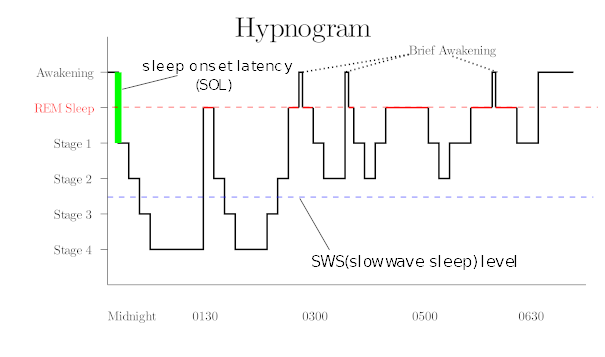
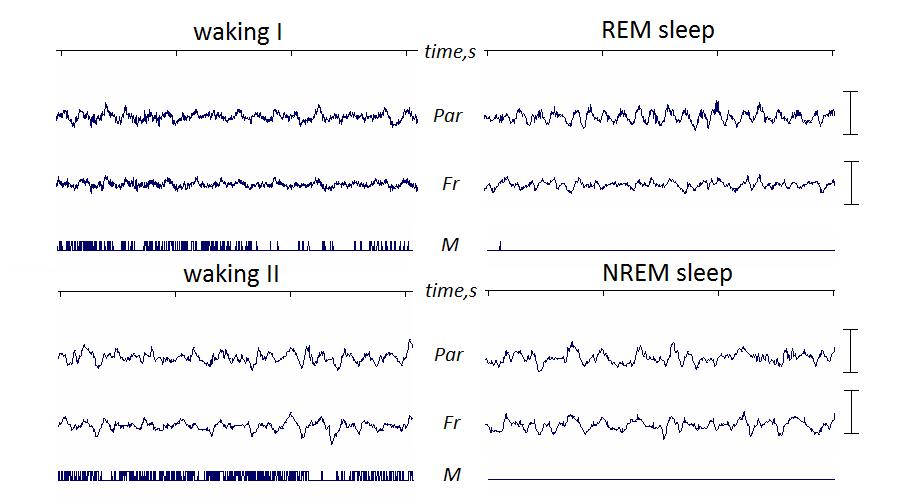
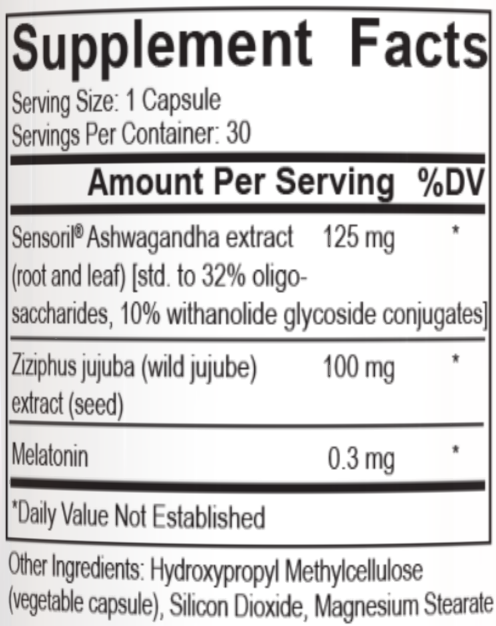
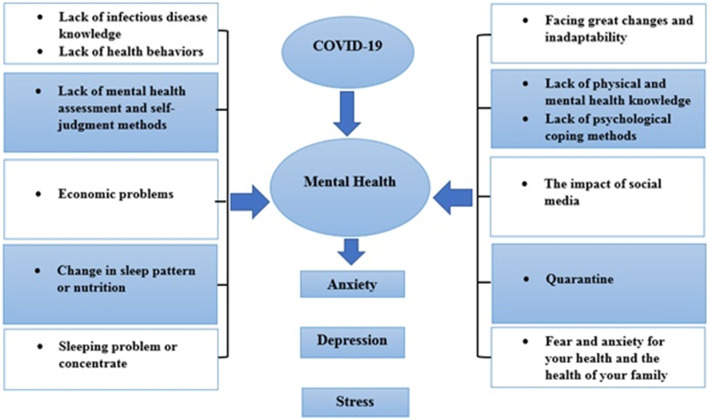
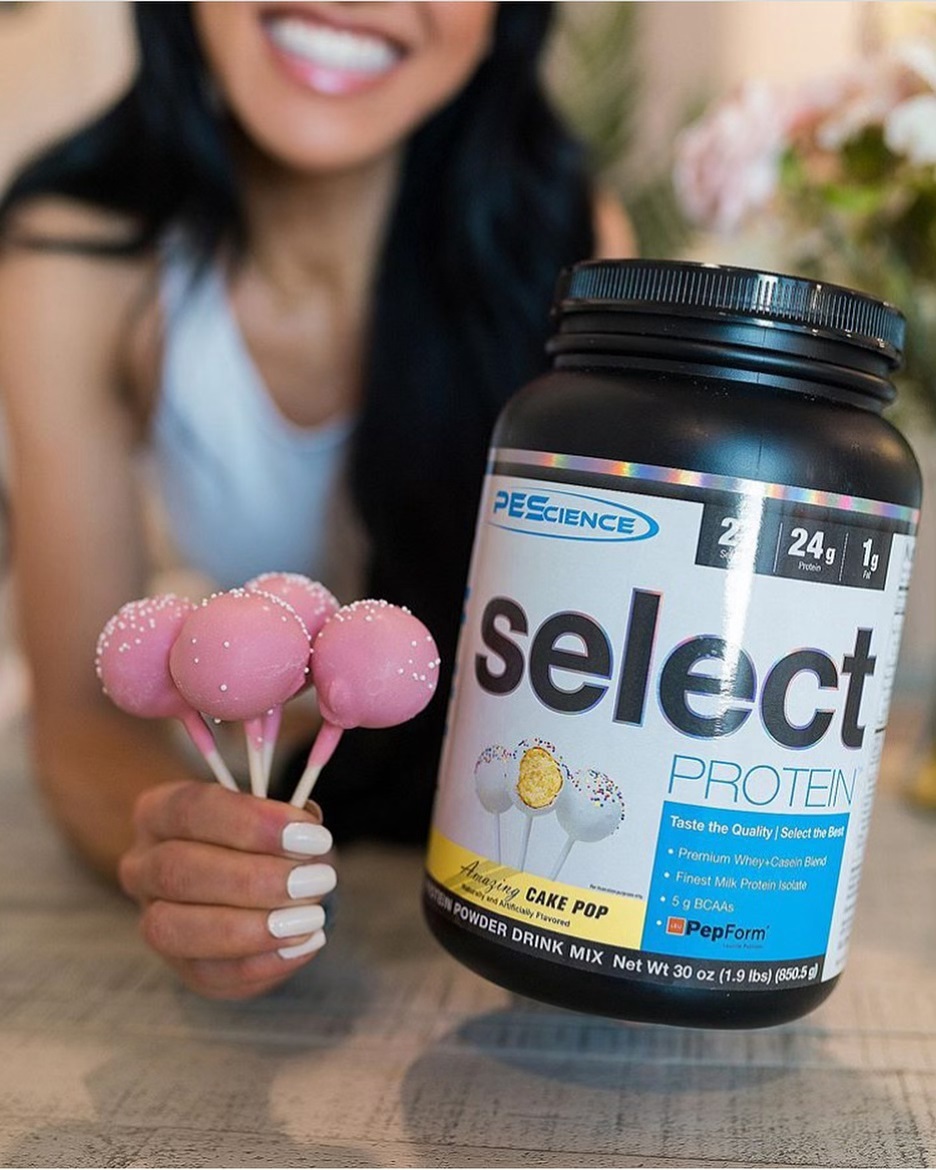

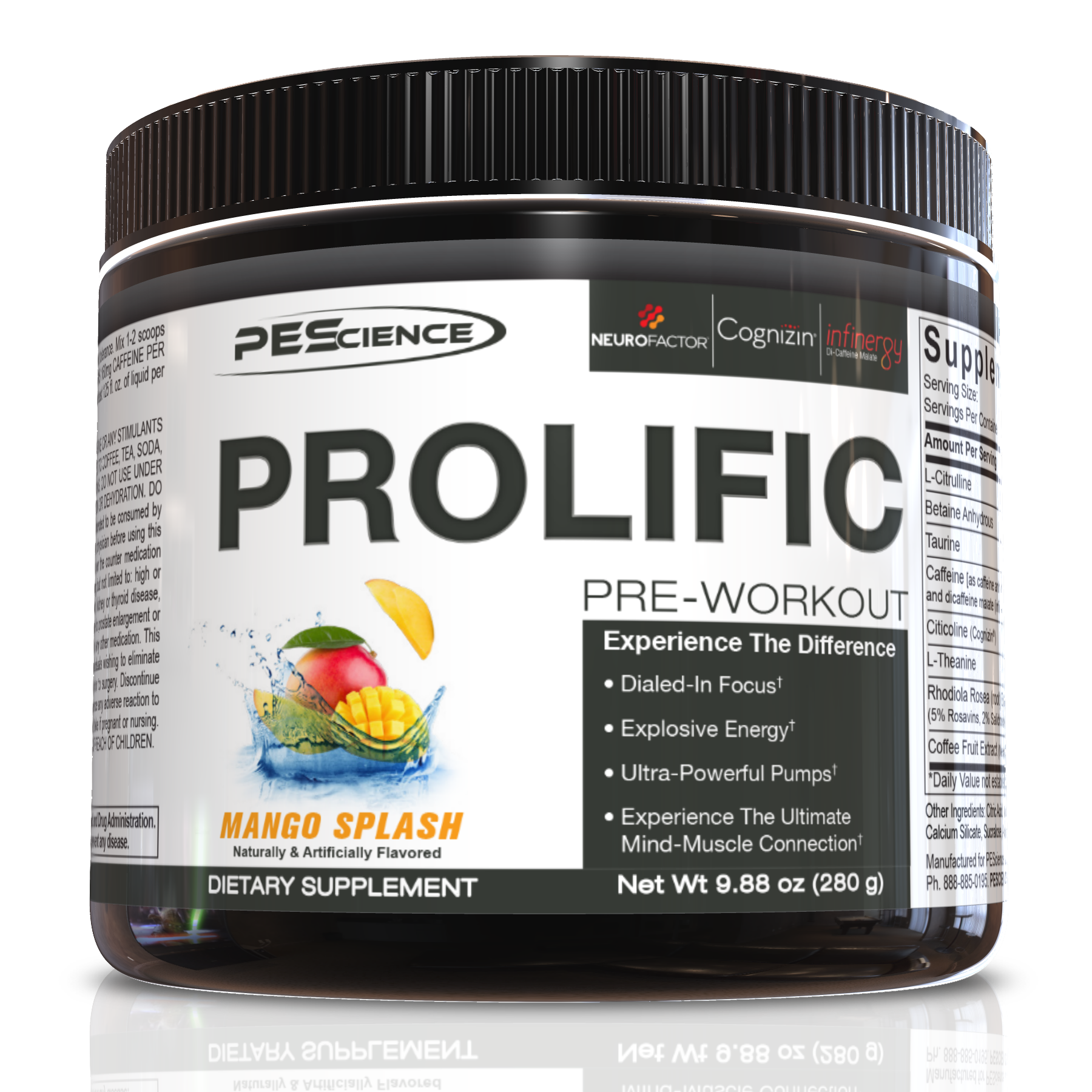


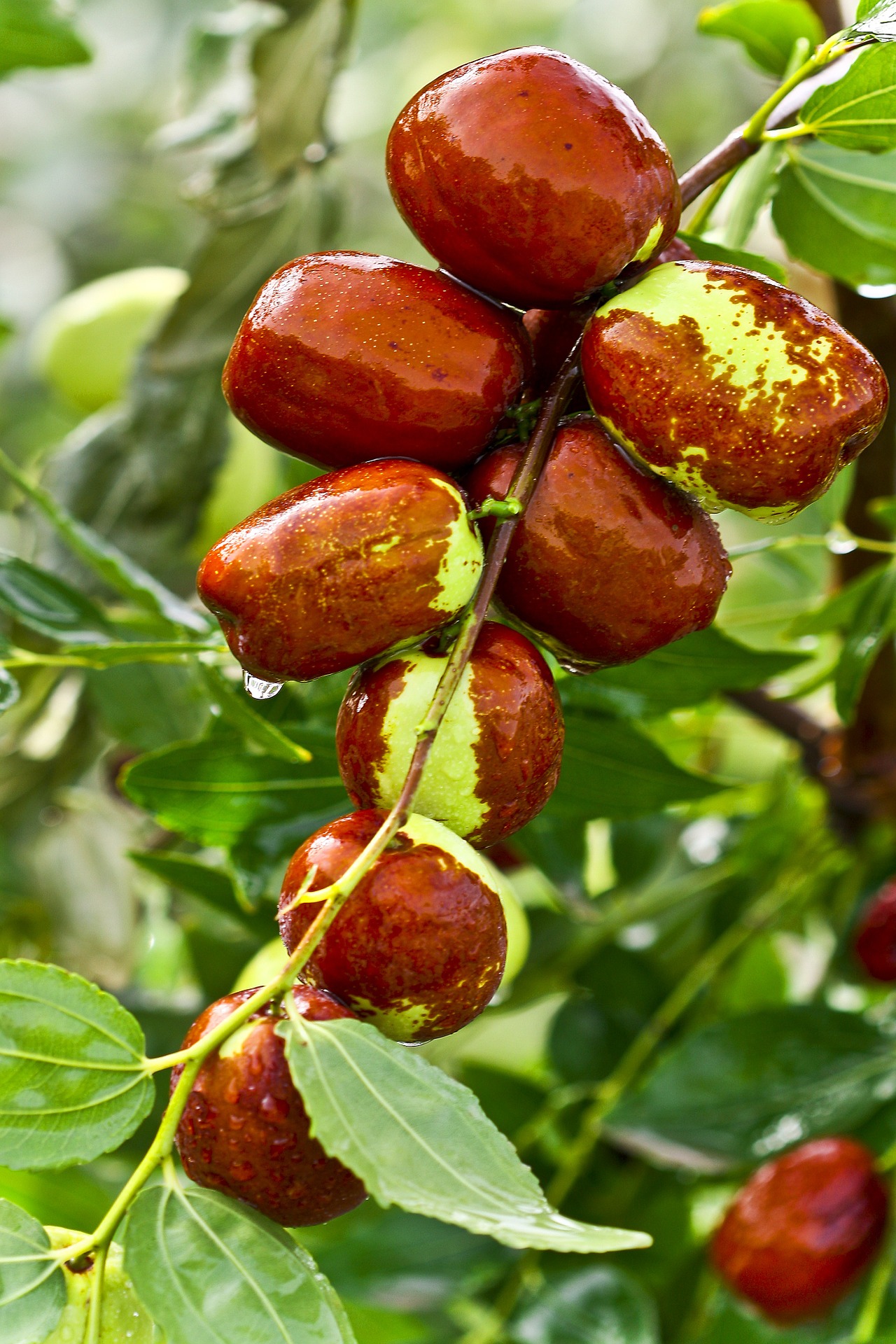
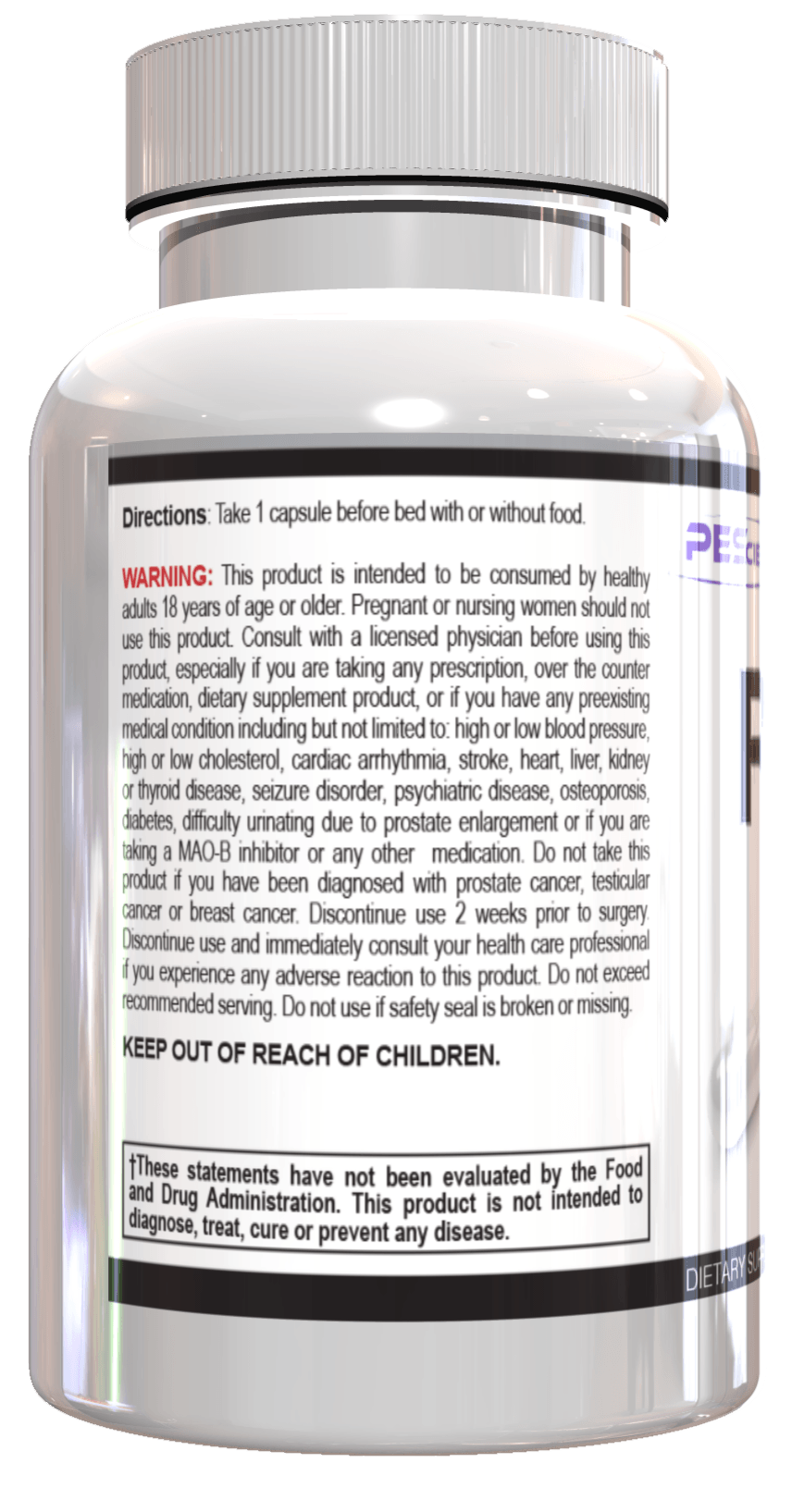
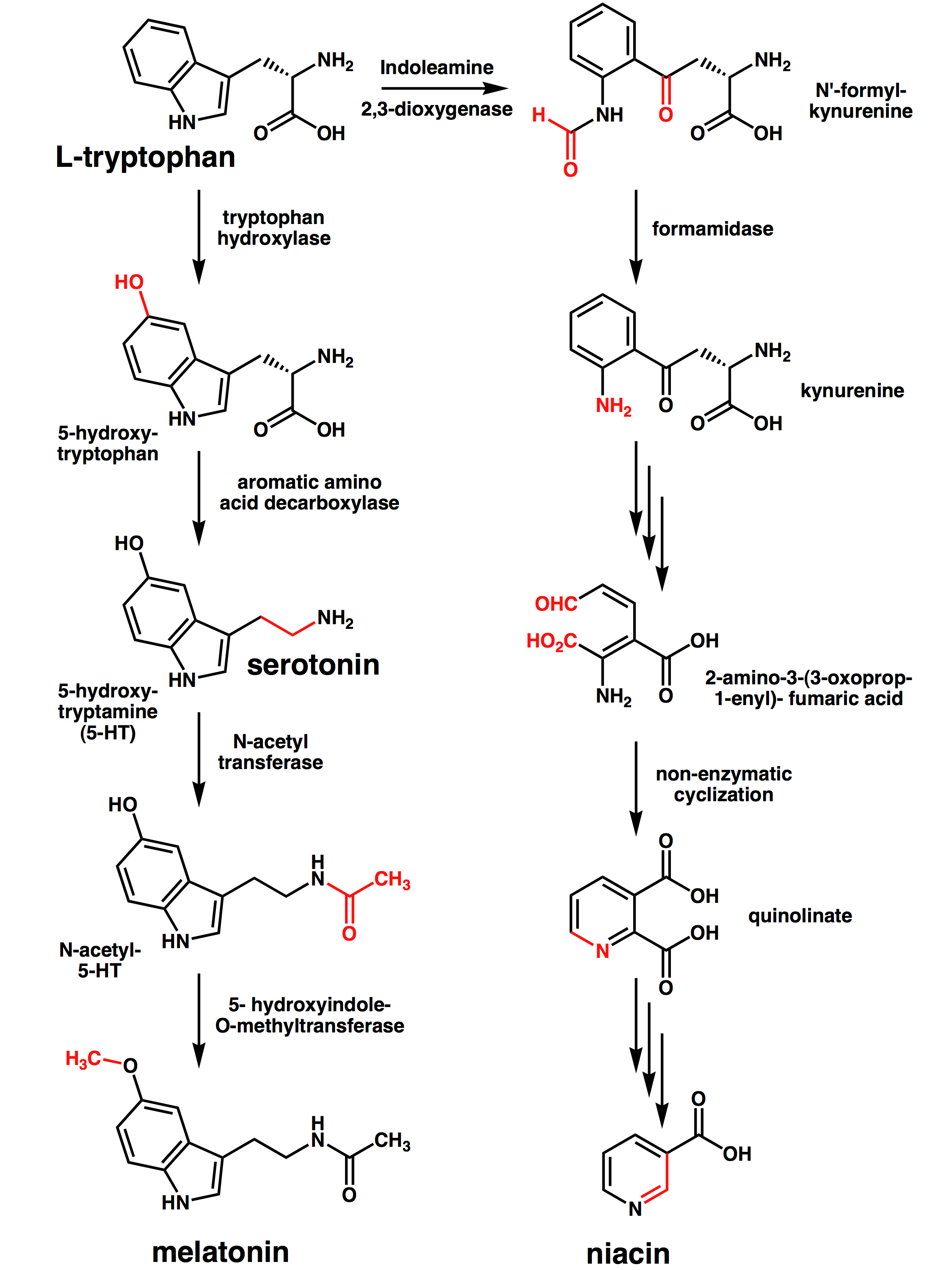
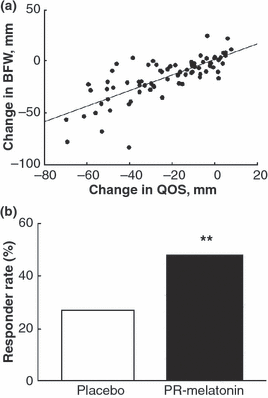
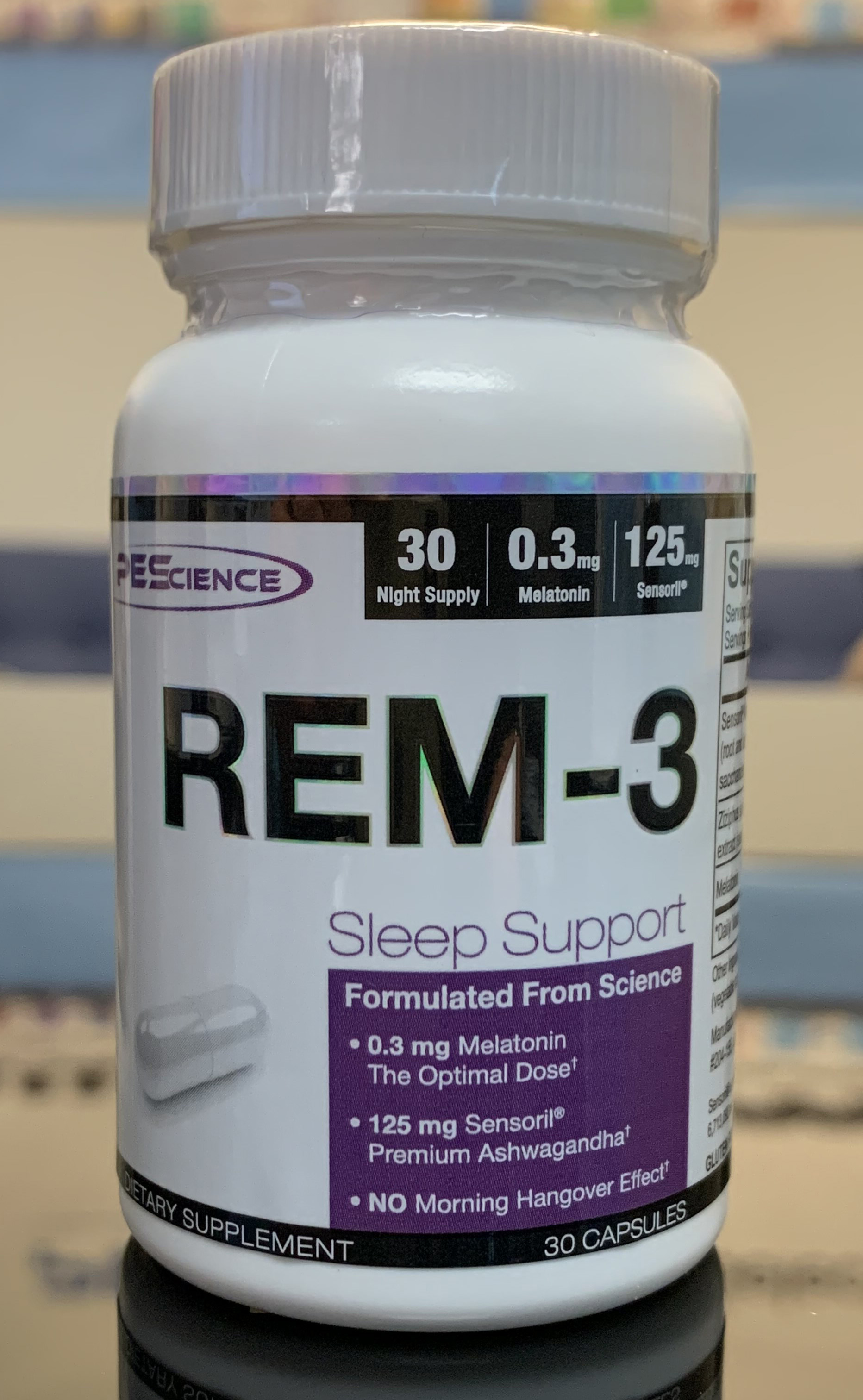


Comments and Discussion (Powered by the PricePlow Forum)